Photo: David Becker/Getty Images

Ricky Martin
news
Ricky Martin: Las Vegas Residency Special To Air
Special behind-the-scenes look at he GRAMMY winner's residency set for Sept. 4 on VH1
GRAMMY and Latin GRAMMY winner Ricky Martin is best known as an electrifying performer, so "Ricky Martin: Behind The Vegas Residency" — scheduled to air on VH1 on Sept. 4 — should be dynamic entertainment, giving us an intimate look at the superstar.
The one-hour special will give fans a behind-the-scenes look of Martin's sold-out residency, which took place at the Park Theater of Monte Carlo Resort and Casino in April and will continue with additional spot dates through Sept 23.
Nominated in consecutive years between the 41st GRAMMY Awards for 1998 and the 44th GRAMMY Awards for 2001, and more recently scoring his second GRAMMY win for Best Latin Pop Album at the 58th GRAMMY Awards, Martin has proven to be a man who crosses boundaries — with his music, charity work and status as a gay icon.
Martin's intervening years also brought him three Latin GRAMMY wins: Music Video for 2001 for "She Bangs" and two awards for 2007 MTV Unplugged, both the album and the long-form video. In 2006 he was honored as The Latin Recording Academy Person of the Year, an annual Latin GRAMMY Week event supporting the Latin GRAMMY Cultural Foundation.
Just as Martin puts a cap on his Las Vegas residency, Latin GRAMMY season will be in full swing. Latin GRAMMY nominations will be announced on Sept. 20 and the 18th Annual Latin GRAMMY Awards will be held on Nov. 16 in Las Vegas.
Historic Scholarships Awarded By Latin GRAMMY Cultural Foundation
.jpg)
Photo: Zeus Lopez
feature
Revisiting 'El Nervio Del Volcán' At 30: How Caifanes' Final Album Became A Classic In Latin American Rock
Released in June 1994, 'El Nervio Del Volcán' was a high point of the rock en español explosion and a serious evolution in the Mexican band's sound. Decades after its release, GRAMMY.com explores the story behind and impact of Caifanes' legendary LP.
As its title suggests, the final album from iconic Mexican rock band Caifanes heralded an explosive new evolution in hybrid rock. El Nervio Del Volcán ("nerve of the volcano" in English), was the culmination of a years-long quest by the band to alchemize modern rock and Latin American music.
Released June 29, 1994, El Nervio Del Volcán represents a high point of Mexico’s rock en español explosion. The 11-track album — the band's fourth release — saw Califanes continuing to explore the sounds of Mexico and Latin America, while broadening their sonic palette with jazz and country.
Since their formation in 1987, Caifanes had been working to refine a sound that was both commercially successful, highly original, and beloved by critics and fans alike. For their efforts, El Nervio became the second Spanish-language rock album to chart on the Billboard Latin 50. Rolling Stone, which rarely gave Spanish-language music column inches, gave the album a glowing review. Caifanes became the first Mexican band to play on MTV’s "Unplugged" in October 1994. The next year, they opened for the Rolling Stones in Mexico City.
While Caifanes might have been the leading band of Mexico’s rock en español movement, they were part of a cohort that included bands like Café Tacuba, Maldita Vecindad, and Fobia — which were experimenting with new fusions of traditional Latin American and rock sounds. Caifanes was at the vanguard of the Mexico City-centric movement, and El Nervio showcased the band's skill in developing "strong hits, and experimental things, which I think kind of worked," music journalist Ed Morales tells GRAMMY.com.
In an interview, Mexican rock historian Federico Rubli calls the record "a very important album, that maybe in its time wasn’t sufficiently appreciated. Even today, 30 years later, it’s difficult to recognize how great a work it was." If the crossover success weren't appreciation enough, El Nervio is notable for the way in which it set a high standard in songwriting and production for other bands that followed.
Caifanes was daring beyond their sonic experimentation. Like most Mexican rock bands at the time, their music was prohibited from being played on the radio and they risked arrest for performing. By the time of their first concert at the legendary Rockotitlan festival in Mexico City in 1987, though, there was no stopping what would soon become a new rock movement. The following year, they broke through the government’s music blockade when their first single, "Mátenme Porque Me Muero" ("Kill me because I am dying"), hit the airwaves.
The follow-up single, "La Negra Tomasa," a post-punk inflected cumbia rocker that became a smash hit across the country, selling a record 500,000 copies. Their self-titled debut album was released shortly thereafter, with the band members looking like extras from a movie about goth subculture on the cover. Their third album, 1992’s El Silencio, found the band more musically confident than ever before. Producer Adrian Below — the former guitarist and frontman of King Crimson who had also played with David Bowie and Talking Heads — helped the band expand their musical palette with "cotton-candy high notes, rumbling ocean rhythms with upsurges that bellows like sea elephants," music critic Chuck Eddy wrote.
Everything changed for the rock en español movement in 1993, when the pop-rock outfit Maná, which played a syrupy mix of tropical-influenced music, sold a million copies of its second album, ¿Dónde Jugarán Los Niños? Record labels were suddenly pursuing the next hit-making Latin band and BMG, which had signed most of the major rock en español bands, considered Caifanes its star rockers.
The band had fractured as they prepared to go back to the studio, with original bassist Sabo Romo and keyboardist Diego Herrera leaving the group. With the increased backing by their label, the trio of lead singer/songwriter and guitarist Saúl Hernández, Argentine-born guitarist Alejandro Marcovich, and drummer Alfonso André traveled to Burbank, California, to record El Nervio Del Volcán GRAMMY-winning producer Greg Ladanyi (known for his work with Toto, Fleetwood Mac, and The Church) was brought into the O’Henry Sound Studios, along with a few special guests. Famed trumpeter Jerry Hey (known for his work on Michael Jackson’s "Thriller") and Graham Nash both appear on El Nervio.
The songs that Hernández largely wrote and that the other band members would coalesce around were heavily influenced by Mexican folkloric sounds, though Marcovich in particular introduced a variety of Latin American sounds with his guitar. Throughout El Nervio, Caifanes flows effortlessly between genres: a bit of rustic son huasteco ("La llorona"), jolts of metal ("El Animal"), and Caribbean rhythms ("Aviéntame").
Rubli tells GRAMMY.com that the album was notably different from the band’s previous releases, largely due to Marcovich being given leeway with the guitar arrangements. "El Nervio Del Volcán is a much more rounded album, more integrated, with a sequence in each song that is, you might say, more logical," he says in Spanish. "And a lot of that is due to the liberty that Alejandro had to arrange them as he wanted."
Soul-stirring anthem "Afuera" was an unusual choice for a lead single — it features an instrumental guitar interlude that lasts for more than a minute — but proved brilliant. Even Markovich, the guitarist who wrote the interlude, was dubious about its commercial potential.
"I never could have imagined it would be a single," he said in 2022 on the podcast "Cuéntame Un Disco." "I even told the record company that they might want to do a more radio friendly version without it, but they left it and it worked."
Today the song is popular among musicians on YouTube precisely because of its interlude.
Second single "Aqui No Es Asi" was also a hit. Marcovich, again on the podcast, said he was writing melodies on the guitar when he found an unusual rhythm "between Caribbean and Andean." "It was a strange mix," he said.
Hernández has been called the "poet laureate of Mexican rock," and has often weaved social themes and indigenous mysticism into the lyrics of his songs. In the propulsive "Aqui no es asi," Hernandez obliquely refers to two different places — one materialistic and out of touch with spirituality, and the other a land "where blood is sacrificed for love." The song has been interpreted as a criticism of Eurocentric values that have marginalized more indigenous ones.
The album slows down considerably with the acoustic, melancholic hymn "Ayer me dijo un ave." Now one of the band’s signature songs, the song is about strength in the face of adversity. Its lyrics are heavy with surrealistic imagery: "Yesterday a bird told me while flying where there is no heat," Hernández sings. "That the long-suffering are not resurrected in dreams."
Many of the other songs have become classics in Mexico and among Spanish-speakers in the U.S. Highlights include the full-throttle tropical-tinged "Aviéntame"; "Pero Nunca Me Caí," which features Nash on harmonica; and "Quisiera Ser Alcohol," a jazz-influenced lament with trumpet from Hey and a sumptuous fretless bass from guest Stuart Hamm.
More Sounds From Latin America & Beyond

Nelly Furtado On How Remix Culture, ADHD & Gen Z Inspired Her New Album '7'
.webp)
Revisiting 'El Nervio Del Volcán' At 30: How Caifanes' Final Album Became A Classic In Latin American Rock
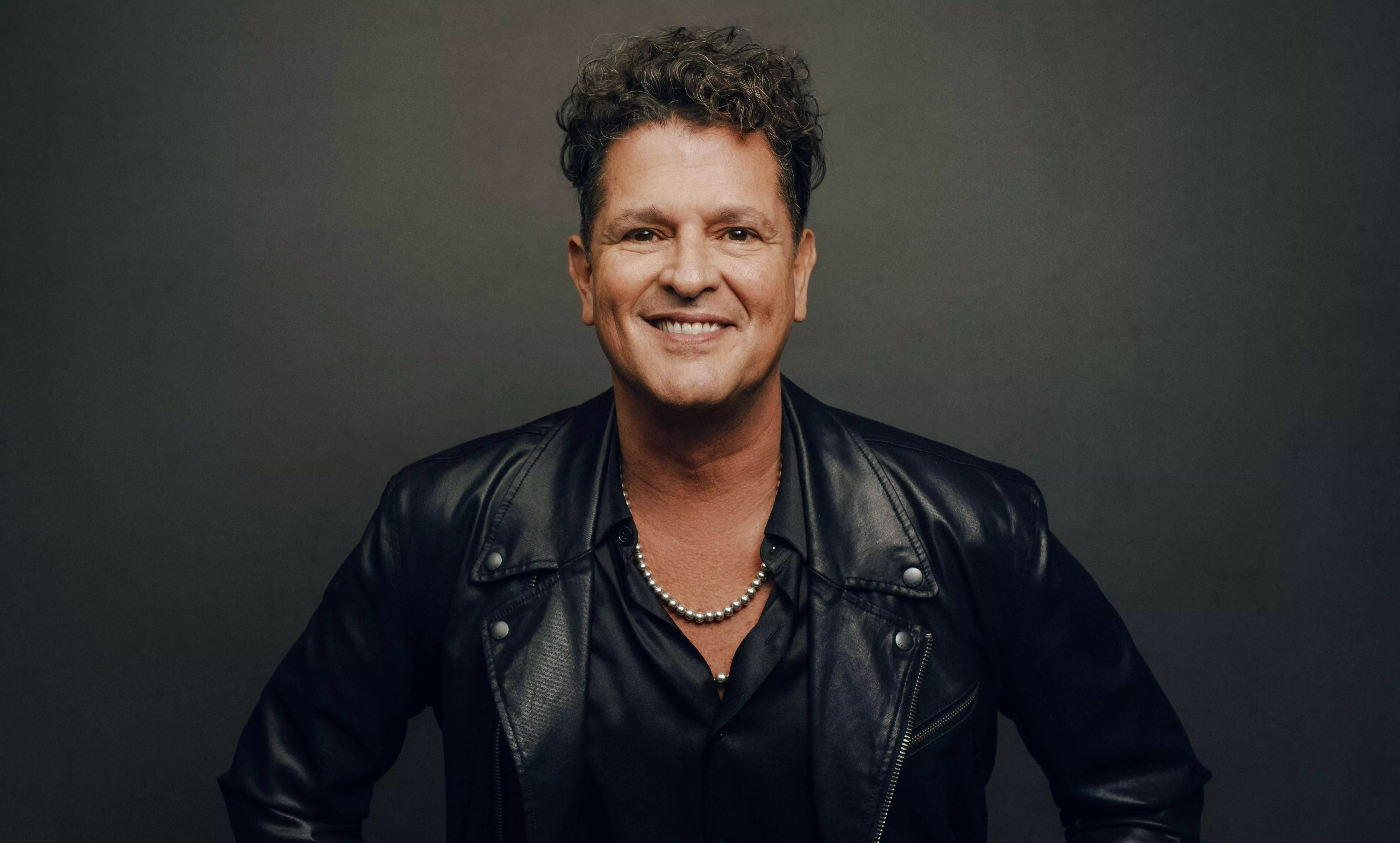
Carlos Vives Named The 2024 Latin Recording Academy Person Of The Year: What To Know About The Latin Music Icon
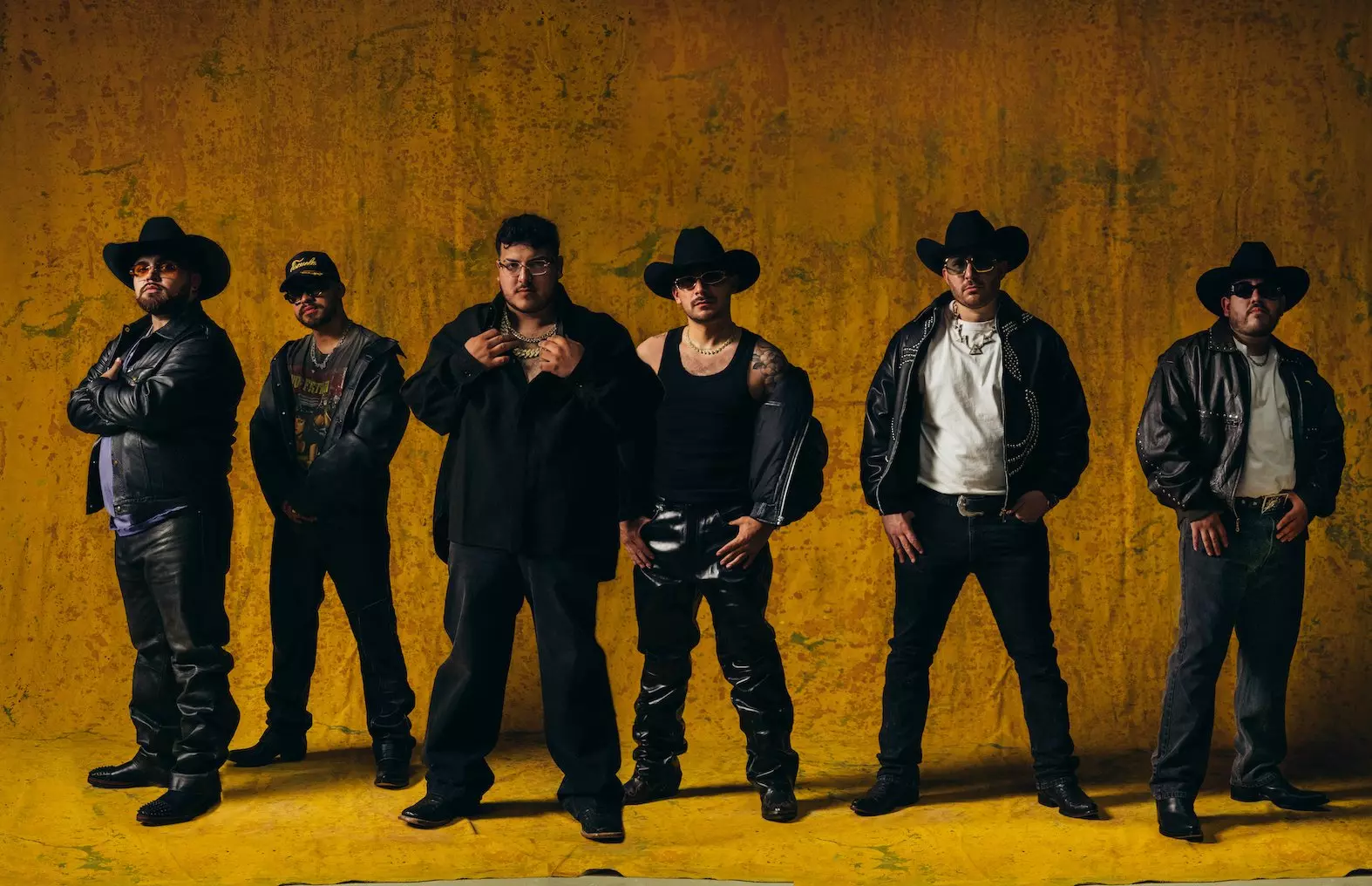
Grupo Frontera On 'Jugando A Que No Pasa Nada' & Fully Expressing Themselves: "This Album Was Made From The Heart"

5 Artists Leading A New Wave Of Latin Trip-Hop & Downtempo: Céu, Natalia Clavier & More
Rafael Catana, an influential folk-rock musician in Mexico City who has hosted a music show on government-funded radio since 1997, says Caifanes' last album "arrived at a crucial moment in Mexican history" when the country was undergoing a massive social and economic transformation. Both sonically and in its production, El Nervio reflected the conflict between Mexico's interest in transnational capitalism and its underclass.
In the early 1990s, elites had opened the country to a flood of foreign corporate investment with the North American Free Trade Agreement. On Jan. 1, 1994, an armed indigenous uprising against those policies by the Ejército Zapatista de Liberación Nacional challenged the government unlike any other group had attempted in decades. (Security forces had warned against political dissidence when they massacred student protesters in Mexico City in 1968 and launched a dirty war to round up "subversives" and marginalize the counterculture, including rock bands).
While El Nervio doesn’t explicitly mention any of these historical points, it is clearly a product of the era, filled with evocations of Indigenous musical traditions despite being produced by a major corporate label. During the tour in support of the album, the band made it clear that they were on the side of Mexico’s most oppressed class, with footage of Indigenous villages and archeological sites shown during their concerts. Hernández would sometimes call on audiences to support Mexico’s native people.
Backstage, the relationship between Marcovich and Hernández became impossible and contributed to the breakup of the band. The rupture between them would become a subject of headlines in the media. Though the exact details of their conflict remain vague, the band played their final show on Aug. 18, 1995, in San Luis Potosí. A legal dispute over the name Caifanes endured for years.
By the time Caifanes broke up, rock en español was entering a new phase led by the indie-folkloric experimentation of Café Tacuba. Other musical trends also started emerging: the rap-rock of Molotov, the electro of Plastilina Mosh, the commercial explosion of Juanes' tropical pop, the Caribbean alternative rock of Aterciopelados.
In the interim, Hernandez formed a new band with André. Their Jaguares channeled a more aggressive sound, and their 2008 album 45, took home a golden gramophone for Best Latin Rock or Alternative Album at the 2009 GRAMMYs. In 2011, the original members of Caifanes reunited to play Coachella.
But the truce between Hernández and Marcovich didn’t last, and the guitarist once again left the band. A reunited Caifanes, with original members Hernandez and André, are on tour in 2024 with fellow Mexico City rockers Café Tacuba.
Mexican music journalist David Cortes, who has written several books on Latin American music, said the band was at their creative peak with El Nervio Del Volcán and had established a striking balance between traditional music and foreign sounds. Ultimately, though, the break-up of the band limited its influence over the years.
"They wanted to go further," he says in Spanish. "And there are hints of where they might have gone."
Latest News & Exclusive Videos

The 2024 GRAMMYs Have Been Nominated For 5 Emmys: See Which Categories

Nelly Furtado On How Remix Culture, ADHD & Gen Z Inspired Her New Album '7'

Watch RAYE Display Her Songwriting Notebook
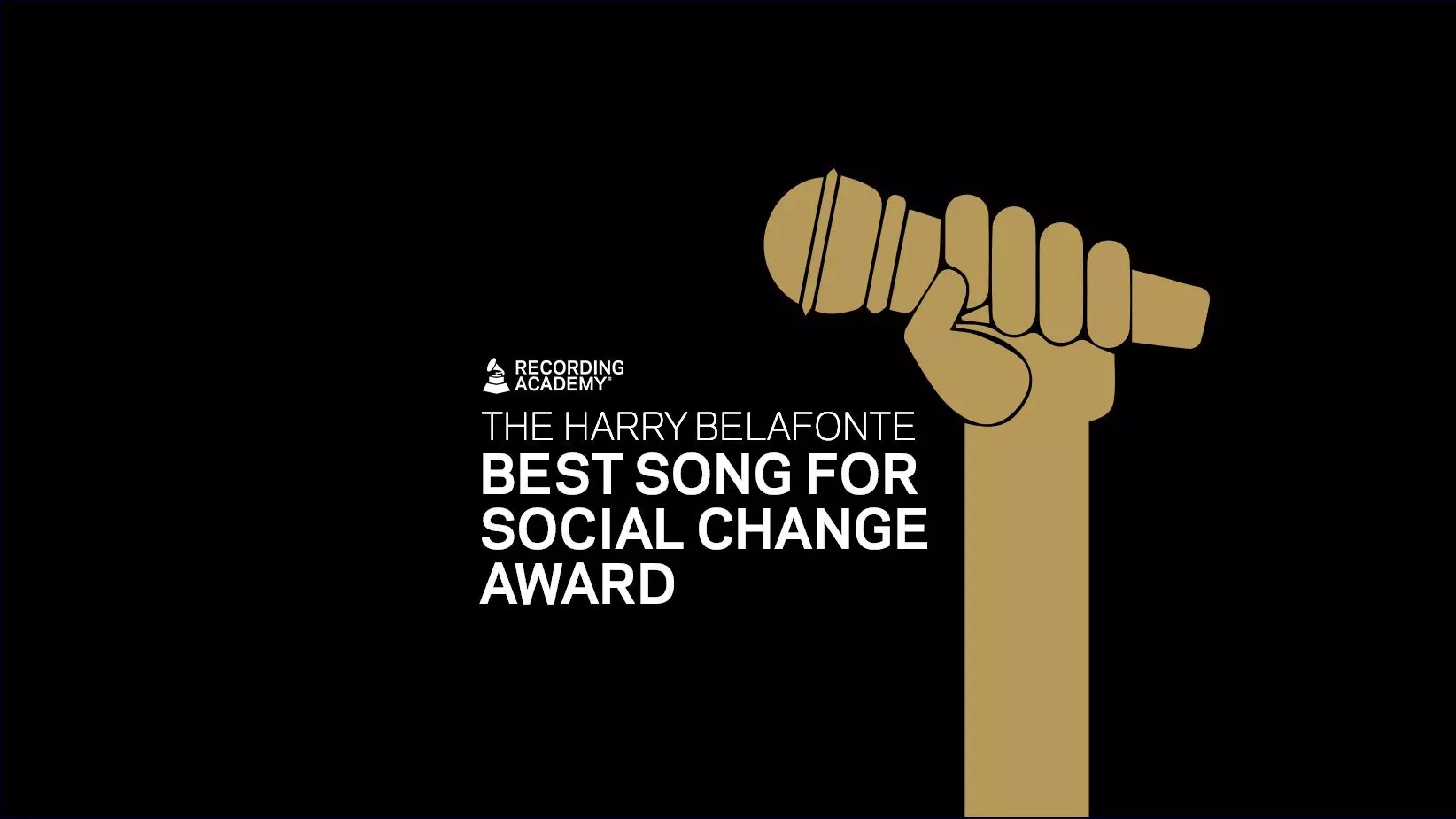
Recording Academy Renames Best Song For Social Change Award In Honor Of Harry Belafonte
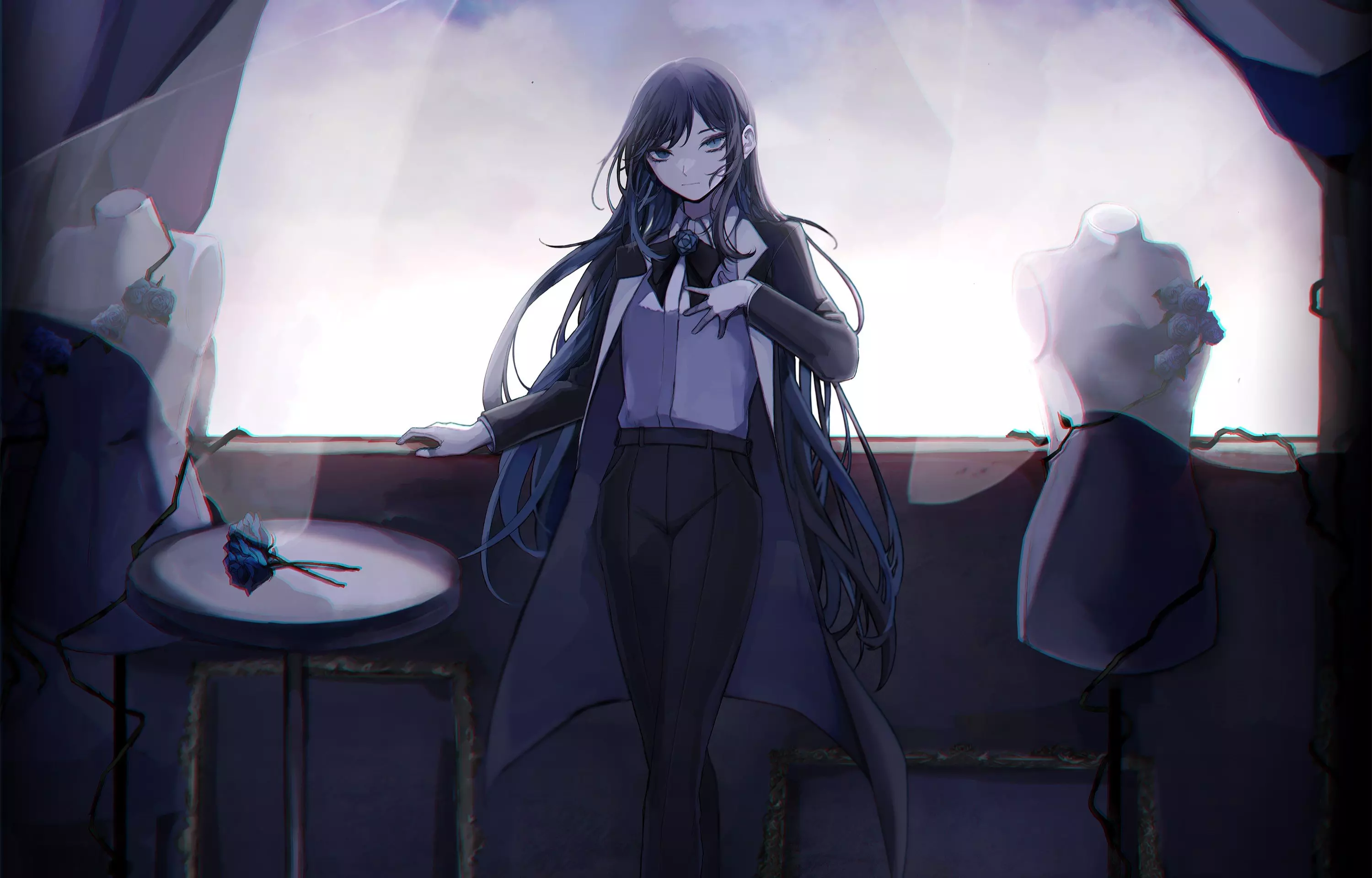
Get To Know Ado, The J-Pop Vocaloid Star Condemning Conformity
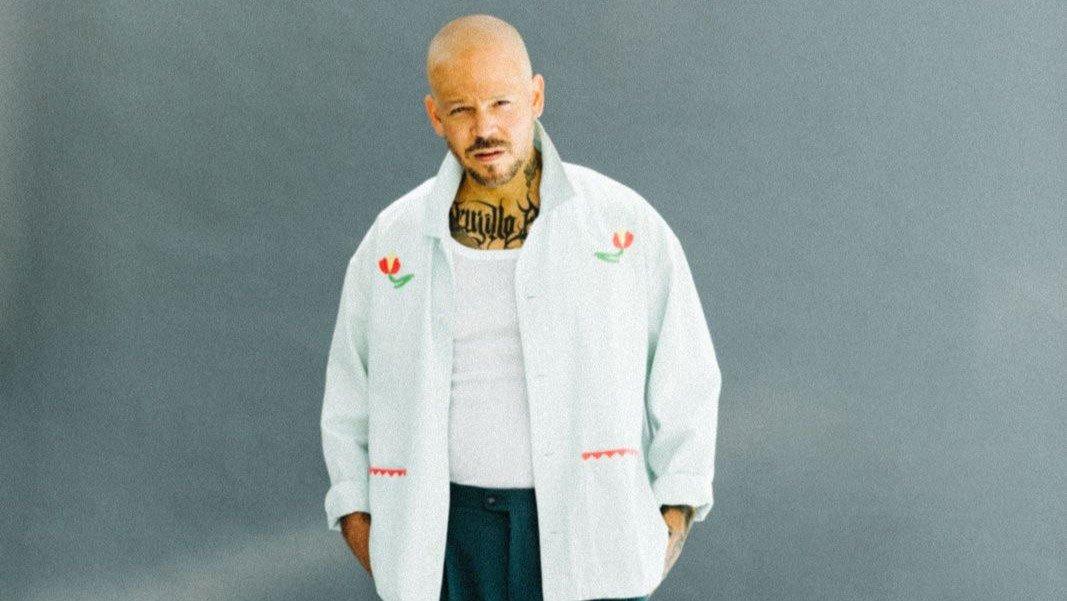
Photo: 5020 Records
interview
Inside Residente's 'Las Letras Ya No Importan': How His New Album Shows The Rapper In Transition
"It’s an album that marks a musical transition for what’s coming for me," Residente says about his sophomore record, 'Las Letras Ya No Importan.'
Puerto Rican rapper Residente wants to embark on new adventures.
The artist born René Pérez Joglar has dreams of directing movies and acting, writing books, and making for pleasure — not to pay the bills. These goals reflect a new attitude, one resulting from time spent reflecting on the passage of time and the presence of death.
Residente's sophomore album, Las Letras Ya No Importan (Lyrics No Longer Matter), echoes this transitory period. An extensive body of work, featuring 23 tracks, with several songs surpassing the five-minute mark. Las Letras is an act of deeply intimate rebellion.
"It’s a very personal album, and I sought to connect with myself in many moments throughout," Residente tells GRAMMY.com.
While Las Letras explores topics already a hallmark of his music — the music industry, political systems, Puerto Rico — it's also exceedingly vulnerable. The 28-time Latin GRAMMY and four-time GRAMMY winner opens up about depression and personal relationships, and confronts mortality.
Lead single "313" is inspired by Residente's late friend Valentina, whose voice appears in the first interlude. As Residente recounted to El País of Spain and GQ Spain, Valentina was a violist, and the last messages they exchanged on WhatsApp were at 3:13.
The song begins with a French verse, fulfilling Valentina’s wish, expressed in the first interlude, to do something in that language. "Les paroles n'ont pas d'importance," (words no longer matter), a female voice whispers, followed by a spectacular string arrangement.
Residente revisited older works during this period of creative transition, and the record features previously released tracks "René," "This Is America," and "Quiero Ser Baladista."
Las Letras Ya No Importan features many collaborations, with actress Penélope Cruz, Spanish singer Silvia Pérez Cruz, Rauw Alejandro, Ricky Martin, Christian Nodal, Arcángel, Jessie Reyez and others making appearances. Hip-hop icon Busta Rhymes is featured on "Cerebro," while Big Daddy Kane makes an appearance on "Estilo Libre" with Vico C.
GRAMMY.com spoke with Residente via Zoom about the process that led him to his second album, the symbolism behind "313" and the artistic connection to Spain.
This interview has been edited for length and clarity.
What inspired you to create Las Letras Ya No Importan?
It’s an album that marks a musical transition for what’s coming for me. It feels diverse; it also has songs with which I may not feel as connected [to] now because several years have passed since I made them. There are newer songs with which I do connect, which have a bit more to do with the way I want to start working on my music in the future.
"René" is part of this album, even though it came out four years ago. This is an album I was going to release during the pandemic.
We have "René," which is very personal; we have "313," which I also feel is personal; then "Ron en el piso," [a song about the passage] of time, the collaboration with Nodal ("Pólvora de Ayer") also touches on the theme of time, of enjoying everything.
You confront death in several songs. In "René," you sang about losing a friend; in "Ron en el piso," you see your funeral; and in "313," you draw inspiration from your late friend Valentina. What is it about death that inspires you?
It’s something I’ve been going through in recent years. I lost many people I love, and it made me much more reflective when it comes to understanding time, the things I want to do, and the things I’ve stopped doing.
That’s why I’m also transitioning to cinema. I’ve always wanted to make films, directing, being behind the scenes, not being on stage. I’m crazy about dedicating myself entirely to that.
I discovered acting now in a movie I starred in [In the Summers] that won the Jury Award at Sundance. When I saw it, I didn’t know I was the protagonist until I watched it. [The film] encouraged me to follow that too, and I’m going to want to act, direct; I want to dedicate myself to that for a while fully.
The album has a lot of life, and even though the lyrics no longer matter, you still have much to tell. You already said the album is very personal, but how would you describe it?
I can describe it in two years, not right now. It’s transitional. That’s what happened with Calle 13; everything was a musical and lyrical change from the second album onwards.
Residente represented a fusion of world music and rap. Now, in this one, I’m using a lot of strings, cellos, and double bass. I’m going to experiment a lot with different instruments in different ways. I’m going to be creative without the need to balance the album.
What’s coming next doesn’t have that artistic pressure. The only artistic pressure I want to have is to do the highest I can, which happens organically, not feeling pressured but naturally.
I want to do art as I did in college [at Savannah College of Art and Design]. I was never thinking about people or trying to convince anyone, and I was completely free, and that’s what happened with "313." I had the freedom I always wanted to have.
There’s substantial symbolism in "313," from the faceless dancers, the color pink. What was your vision with the visuals?
The dancers represent time. Penélope [Cruz] can represent many things, from life to Valentina, my friend, who inspired me to make the song. Penélope controls me, holds me, flies me, brings me back, and then I decide to control my life and time. That’s why I raise my hands, and everyone raises them, and time is running out, and then you see a sunset.
Sunset marks the end of something. The colors of the costumes also have some dusk elements. You can see at the end when I’m disappearing; it fades and blends with the end of the sunset.
These are decisions I make that are both aesthetic and technical. I put masks on the dancers because I liked it aesthetically. It also helped me speed up the process with makeup. I had to find creative ways to maintain the video’s aesthetics and make everything more agile because in filming, everything is time, and I had little of it.
What’s the idea behind the song "Las Letras Ya No Importan?"The arrangement is magical, with a numerical sequence from one to eight in different languages and a voice spelling of the alphabet.
That was the initial track. Before "313," I had this idea that I dreamed of with some basic notes, and it turned into something big.
There’s a voiceover of Penélope [Cruz] that says that we were eight [people in the studio], we are on an 8th street in New York, in studio B, which, if you look at it, it resembles the number 8. Everything connected with eight and [that number] also at a time level can mark infinity. So, I connected all that with the immensity of letters and languages. That piece’s runtime is five minutes. I think it’s pleasurable. I like that music, which resembles what I want to do.
Leo Genovese, an excellent musician and musical genius, made the arrangements. I greatly respect him.
In "Cerebro," you showcase your skill and vocal speed; what was it like collaborating with Busta Rhymes, whose own flow is iconic?
We met, and he loved the concept of what I was working on. He was a very humble, good person to me. After we met in person and talked for a while, he went to write after I sent him everything I had written in English.
I created ["Cerebro"] a while ago…. That’s why I tell you that the album has several concepts that I had to let go of because it was too much, and a lot of time had passed. I had a previous concept when I released the song "René" [in 2020], which is why it’s on the album. [At that time] I was working with the brain waves of different animals and people, and I made music with those brain waves.
This song ["Cerebro"] is part of that, and that’s why it’s called "Cerebro." The album was originally going to go that route. Then I didn’t do it; maybe I’ll connect to it in the future because I loved that idea.
What has Spain meant to you? The country has been so prominent in the trailers you’ve released and in the collaborations in your latest songs.
I've been making frequent trips to Madrid. This past year, I was there a lot; I was more in Madrid than at home. I traveled, wrote, and filmed videos like "Problema cabrón" and "313."
I grew up with Spanish cinema by Almodovar and a bunch of directors I admire, and I wanted to collaborate with the actors I grew up watching in movies.
This album has many personal elements, and cinema is very intimate for me. I saw [Penelope Cruz] in [the movie] Abre los ojos when I was a kid; working with her now is a dream. The same goes with Javier Cámara and Najwa (Nimri) [who is in the film] Lovers of the Arctic Circle by Julio Medem. I saw all these people, and now being able to collaborate with them, be friends with them, talk to them is a dream. Everything is very connected to my life.
Erick The Architect Steps Into A New World On 'I’ve Never Been Here Before'
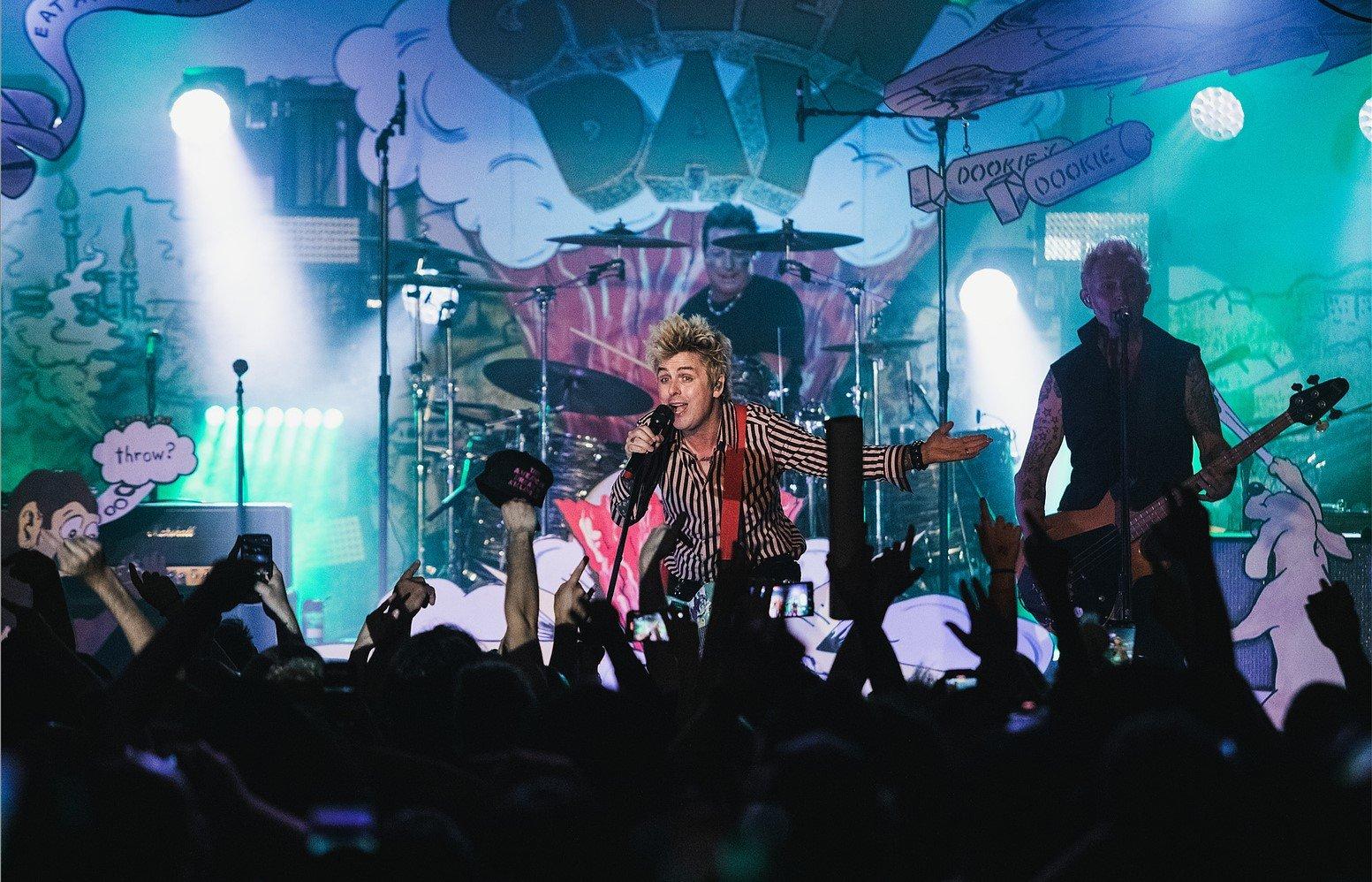
Photo: Fred Morledge
feature
How Las Vegas Became A Punk Rock Epicenter: From When We Were Young To The Double Down Saloon
Viva Punk Vegas! It might have seemed unthinkable a decade ago, but Sin City is "the most punk city in the U.S." GRAMMY.com spoke with a variety of hardcore and legendary punks about the voracious vibe in Vegas that lends itself to punk spirit.
These days, what happens in Vegas, slays in Vegas when it comes to the harder side of music.
It might have seemed unthinkable a decade ago, but as Fat Mike of NOFX and Fat Wreck Chords has been putting out there for a while now, Sin City is basically "the most punk city in the U.S." at the moment. Some might find this statement debatable, but Vegas has long attracted subculture-driven gatherings, from Viva Las Vegas rockabilly weekend to the all-metal Psycho Las Vegas to the mixed bag that was Las Rageous. The latest slate of huge punk and punk-adjacent music events (from Punk Rock Bowling and When We Were Young to the just-announced new lineup of Sick New World 2024) back his claim even further.
Mike’s own Punk Rock Museum, which opened in April of this year, has cemented the city’s alternative music cred — even as it’s still best known for gambling, clubbing, and gorging at buffets.
In fact, A lot of the audacious new activity is centered away from the big casinos and in the downtown area and arts district of what is known as "old Vegas." Just outside of the tourist-trappy, Times Square-like Fremont Experience, there’s a vibrant live music scene anchored by a few key clubs, and an ever-growing slate of fests.
*Attendees at 2022's When We Were Young Festival┃Photo: Tim Mosenfelder/FilmMagic*
Live Nation’s second annual When We Were Young Festival brought out a largely Millennial crowd to see headliners Green Day and blink-182 this past weekend, alongside over two dozen more recognizable openers from emo/pop-punk's heyday. Tickets sold so well when it was first announced, that a second day was added to the schedule.
Green Day didn’t stop with their fest gigs; the band played a "not-so-secret" pop-up show last Thursday night at one of the most popular venues in town for punk, alternative and heavy music: Fremont Country Club, just blocks from festival grounds. The show served as a warm-up gig as well as an announcement by Billie Joe Armstrong: His band will join Smashing Pumpkins, Rancid, and others for a 2024 stadium tour. The band also debuted a timely new track, "The American Dream Is Killing Me."
"People who like punk and other heavy music want to be in a club environment like ours, not a big casino," says Carlos "Big Daddy" Adley, owner of Fremont Country Club and its adjacent music space Backstage Bar & Grill. Both have become live music hotspots not unlike the ones Adley and his wife/partner Ava Berman ran in Los Angeles before they moved to Vegas over a decade ago.
"Fremont East," as the neighborhood is called, will soon see a boutique hotel from the pair. Like everything they do, it will have a rock n’ roll edge that hopes to draw both visitors and locals.
*Outside Fremont Country Club┃Photo: Fred Morledge*
The duo told GRAMMY.com that a visit to Double Down Saloon, Sin City’s widely-recognized original punk bar and music dive was what first inspired them to come to Vegas and get into the nightlife business there. Double Down has been slinging booze (like Bacon Martinis and "Ass Juice" served in a ceramic toilet bowl mug) and booking live punk sounds since it opened back in 1992.
"It's kind of a stepping stone for a lot of bands," says Cameron Morat, a punk musician and photographer, who also works with the Punk Rock Museum as curator of its rockstar-led tour guide program. "People always assume that Vegas is just the strip, but that's only like four miles long. There's a lot more of the ‘‘other city.’ There are people who are just into music and into going to local shows who don't ever go to the main strip."
In addition to the Double Down, Morat says Vegas has always had a history of throwing local punk shows at spaces like the Huntridge Theater, which is currently being remodeled and set to re-open soon for local live music. He also points to The Usual Place as a venue popular with local punk and rock bands now, and The Dive Bar — a favorite with the mohawk, patched-up battle vest scene, featuring heavy music seven nights a week, including a night promoted by his partner Masuimi Max called Vegas Chaos.
*Cameron Morat┃Photo: Kristina Markovich*
While glitzy stage shows from legacy artists and mega-pop hit makers like Usher, Elton John, Katy Perry, Carrie Underwood, Gwen Stefani and Lady Gaga still get the most media attention, raucous local shows are starting to factor into a new generation’s vacation planning, too.
"There’s a really good scene here," Morat proclaims. "It's funny because a lot of people, the sort of gatekeepers of punk, ask ‘why is the punk museum in Vegas?’ But it is a punk city, and not just because you've got all the local bands and the venues."
Read More: City On Fire: X's Explosive Debut Album Los Angeles At 40
Morat, whose own band Soldiers of Destruction, plays around town on occasion, also notes other acts such as Gob Patrol, Suburban Resistance, and Inframundo as having fierce local followings. He says there’s a certain voracious vibe in Vegas that lends itself to punk rock creation, performance and attitude. "A lot of the anger from punk rock — like the disparity of wealth, for instance, is here," he says. "Five minutes down the road, you've got people throwing away a million on the roll of a dice. But you've also got people who are doing like three jobs just trying to pay their rent."
Over at the Punk Rock Museum, Morat, who moved from Los Angeles to Vegas about seven years ago, is keeping busy booking big-name guests to share inspirations and war stories, both weekly, and specifically timed with whatever big festival or event happens to be in town. He says he wants to feature artists that might not be thought of as traditional punk rock, but who have relevant backgrounds and stories to share.
"A lot of these people have punk history the public doesn’t know about," he says. "I think if we just stick to a very small well of people, it's going to get pretty boring. So I'm trying to open it up for a bigger cross-section."
*Imagery from "Black Punk Now" | Ed Marshall*
The museum is already showing the breadth of punk rock’s influence on music in general. During WWWY, the museum held events tied to its new exhibit "Black Punk Now," curated by James Spooner, director of the 2003 documentary Afro-Punk. As Spooner spoke about the film’s 20th anniversary and his new book of Black punk authors, musicians playing the weekend’s festivities from Sum 41, MxPx, Bayside, Less Than Jake came through to talk too. Warped Tour’s Kevin Lyman and Fat Mike himself also took part in the museum’s new after-dark guided tour series.
Bringing in a wider audience and a new generation of rebellious kids who seek to channel their angst and energy into music is part of what the museum — and, it seems, the myriad of events in Las Vegas these days — is all about. Despite what some punk rock purists and gatekeepers might say, the inclusion of tangent bands and scenes is in the original punk spirit. He’ll be booking guests tied to next year’s Sick New World, the Viva Las Vegas rockabilly bash and even EDC in the future (electronic bangers are not unlike hardcore ones and even Moby was a punk before he became a DJ).
"I think that the museum is great for the punk scene here," he adds. "People will literally come to town just to see the museum, and then if there's a band playing in town in the evening, they'll go. So it's broadening the support for all the bands, local and touring. Some punk bands used to skip Vegas completely on their tours, but not anymore."

Photo: Jeff Kravitz/FilmMagic
video
GRAMMY Rewind: Kendrick Lamar Honors Hip-Hop's Greats While Accepting Best Rap Album GRAMMY For 'To Pimp a Butterfly' In 2016
Upon winning the GRAMMY for Best Rap Album for 'To Pimp a Butterfly,' Kendrick Lamar thanked those that helped him get to the stage, and the artists that blazed the trail for him.
Updated Friday Oct. 13, 2023 to include info about Kendrick Lamar's most recent GRAMMY wins, as of the 2023 GRAMMYs.
A GRAMMY veteran these days, Kendrick Lamar has won 17 GRAMMYs and has received 47 GRAMMY nominations overall. A sizable chunk of his trophies came from the 58th annual GRAMMY Awards in 2016, when he walked away with five — including his first-ever win in the Best Rap Album category.
This installment of GRAMMY Rewind turns back the clock to 2016, revisiting Lamar's acceptance speech upon winning Best Rap Album for To Pimp A Butterfly. Though Lamar was alone on stage, he made it clear that he wouldn't be at the top of his game without the help of a broad support system.
"First off, all glory to God, that's for sure," he said, kicking off a speech that went on to thank his parents, who he described as his "those who gave me the responsibility of knowing, of accepting the good with the bad."
Looking for more GRAMMYs news? The 2024 GRAMMY nominations are here!
He also extended his love and gratitude to his fiancée, Whitney Alford, and shouted out his Top Dawg Entertainment labelmates. Lamar specifically praised Top Dawg's CEO, Anthony Tiffith, for finding and developing raw talent that might not otherwise get the chance to pursue their musical dreams.
"We'd never forget that: Taking these kids out of the projects, out of Compton, and putting them right here on this stage, to be the best that they can be," Lamar — a Compton native himself — continued, leading into an impassioned conclusion spotlighting some of the cornerstone rap albums that came before To Pimp a Butterfly.
"Hip-hop. Ice Cube. This is for hip-hop," he said. "This is for Snoop Dogg, Doggystyle. This is for Illmatic, this is for Nas. We will live forever. Believe that."
To Pimp a Butterfly singles "Alright" and "These Walls" earned Lamar three more GRAMMYs that night, the former winning Best Rap Performance and Best Rap Song and the latter taking Best Rap/Sung Collaboration (the song features Bilal, Anna Wise and Thundercat). He also won Best Music Video for the remix of Taylor Swift's "Bad Blood."
Lamar has since won Best Rap Album two more times, taking home the golden gramophone in 2018 for his blockbuster LP DAMN., and in 2023 for his bold fifth album, Mr. Morale & the Big Steppers.
Watch Lamar's full acceptance speech above, and check back at GRAMMY.com every Friday for more GRAMMY Rewind episodes.
10 Essential Facts To Know About GRAMMY-Winning Rapper J. Cole
